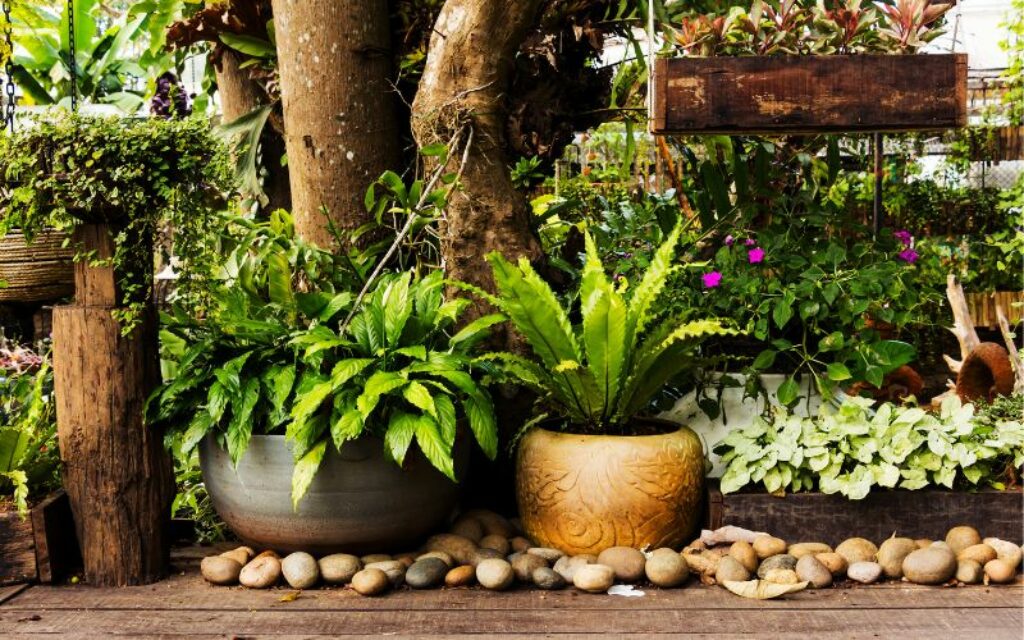
Are you yearning to transform your garden into a vibrant oasis of natural beauty? With the right know-how and a sprinkle of creativity, you can infuse new life into your outdoor space. In this blog post, we’re going to explore some top tips to help you achieve just that. Whether you’re a seasoned gardener or a newbie with a green thumb, these insights will elevate your gardening game and bring your garden to life in ways you never imagined.
Soil Health: The Root of a Thriving Garden
Imagine the soil in your garden as the foundation of your beautiful garden house. Just as a sturdy house starts with a solid foundation, a thriving garden begins with healthy soil. First things first, test your soil to understand its composition and nutrient levels. This simple step can guide you in choosing the right plants and help you implement soil amendments effectively. Compost, organic matter, and mulch are your secret weapons in building fertile soil. Make it a routine to feed your soil with these ingredients, and it will reward you with robust, thriving plants.
Plant Selection: Choosing Wisely
Gardening is like curating an art exhibit. The choice of plants, like the selection of artworks, plays a pivotal role in the garden’s visual appeal. Selecting plants that thrive in your specific climate, soil, and sun conditions is essential. Native plants are a fantastic choice as they are naturally adapted to the local environment. Introduce a mix of flowers, shrubs, and trees to create layers of visual interest. Think about the colors, textures, and bloom times to ensure your garden offers year-round beauty.
Also Read: How to Create a Sustainable Garden Oasis: Step-By-Step Garden Setup Guide
Watering Wisdom: Quench the Thirst
Water is life, and your garden needs it to flourish. Overwatering can lead to root rot, while underwatering can result in parched and unhappy plants. The key is to find the sweet spot by understanding your garden’s specific water needs. Invest in a soaker hose or drip irrigation system to deliver water directly to the roots and minimize water wastage. Remember, it’s not just about how much you water but when you water. Early mornings are ideal to allow plant leaves to dry, reducing the risk of diseases.
Garden Decor: Personalizing Your Green Haven
Adding a touch of personal flair to your garden can make it truly yours. Garden decor can range from sculptures and ornaments to hand-painted signs and creative plant containers. You can even repurpose old items like wheelbarrows and pallets to add a rustic touch. Adding a garden statue or a water feature can bring an element of tranquility and serenity to your space. Think of your garden as an extension of your home, and personalize it to reflect your style and personality. It’s not just about aesthetics; it’s about creating a space where you love to spend your time.
Pest Management: Keeping the Unwanted Guests at Bay
Dealing with garden pests can be a never-ending battle, but it’s one you can win with the right strategies. Avoid harsh chemicals and opt for organic pest control methods whenever possible. Companion planting, which involves planting certain crops together to deter pests naturally, is an ingenious technique. Encourage beneficial insects like ladybugs and lacewings, which are natural predators of garden pests. Keep a vigilant eye on your plants and address any pest problems early to prevent infestations from taking over.
The Art of Pruning: Shaping Your Garden’s Future
Pruning is a skill that can turn your garden from a tangled mess into an organized and inviting space. Regular pruning not only enhances the aesthetic appeal but also promotes plant health. It involves removing dead or overgrown branches and shaping plants to maintain their form. Prune during the dormant season for most plants, but remember that some, like spring-blooming shrubs, should be pruned right after they flower. The more you prune, the more you’ll understand your garden’s unique needs.
Create Wildlife-Friendly Spaces: Attracting Birds and Butterflies
A lively garden teems with life, not just from plants but from visiting creatures too. Create habitats for wildlife by planting nectar-rich flowers and installing birdhouses and butterfly feeders. A water feature, such as a bird bath, will entice feathered friends to visit. Providing shelter in the form of native trees and shrubs allows birds and butterflies to find refuge in your garden. Embrace the symphony of bird songs and the fluttering of butterfly wings as a testament to the life you’ve nurtured.
Continuous Learning: Grow with Your Garden
Your garden is an ever-evolving canvas. Don’t be afraid to try new things and make mistakes. Gardening is a journey of continuous learning. Attend workshops, join gardening clubs, and read books to deepen your knowledge. Keep a journal to document your successes and challenges, helping you learn from your own experiences. As you learn and grow, your garden will do the same, blossoming into a reflection of your dedication and love.
Adding more life to your garden is a rewarding endeavor that connects you with the natural world and creates a space of beauty and tranquility. These tips serve as a roadmap, but the true magic of gardening lies in your connection with the land and your creativity. By focusing on soil health, plant selection, and all the other aspects we’ve explored, you’ll be well on your way to cultivating a garden that’s not just alive but thriving, inspiring awe in all who visit. Happy gardening!